The Secret Lives Of The Romanovs — The Last Rulers Of Imperial Russia (Haunting Photos Show Their Final Days)
Animosity toward Russia's ruling class had already been building for centuries when the House of Romanov took power. But a series of violent suppressions and a mounting death toll during World War I ultimately led to the fall of the last empire in Russia, the final Tsar Nicholas II, and his family.
These haunting photos depict the lives of the Romanovs before their executions in 1918. The remains of the Romanov family members weren't discovered until over six decades after their brutal slaying.
The Romanovs' Remains Are Discovered In 1979

After the execution of the Romanov family, their bodies lay in two unmarked graves in locations that were kept secret by Soviet Leaders. It wasn't until 1979 that amateur historians found the remains of family members, which were later confirmed via DNA testing.
The Romanovs remains were removed and relocated to a room in the Bureau of Forensic Examination in Ekaterinburg. Although amateur historians uncovered the bodies of Nicholas, Alexandra, and daughters Olga, Tatiana, and Anastasia—Alexei and Maria's remains were not located until 2007. Since then, there have been numerous investigations opened and reopened regarding the murders.
A Day At The Beach

This photograph of the Romanov family was found in six recovered family albums that are housed in the Beinecke Library at Yale University. Many of the photos in the recovered albums were shot by the Russian Imperial family’s head of household—Tsar Nicholas II himself.
Pictured below, the last Tsar of Russia’s children pose for a photo while standing in shallow water during a day at the beach. The photo captures three of his daughters as well as their younger brother Alexei Nikolaevich, the heir apparent to the throne of the Russian Empire. He would’ve been about 13 years old at the time.
Visiting The Troops
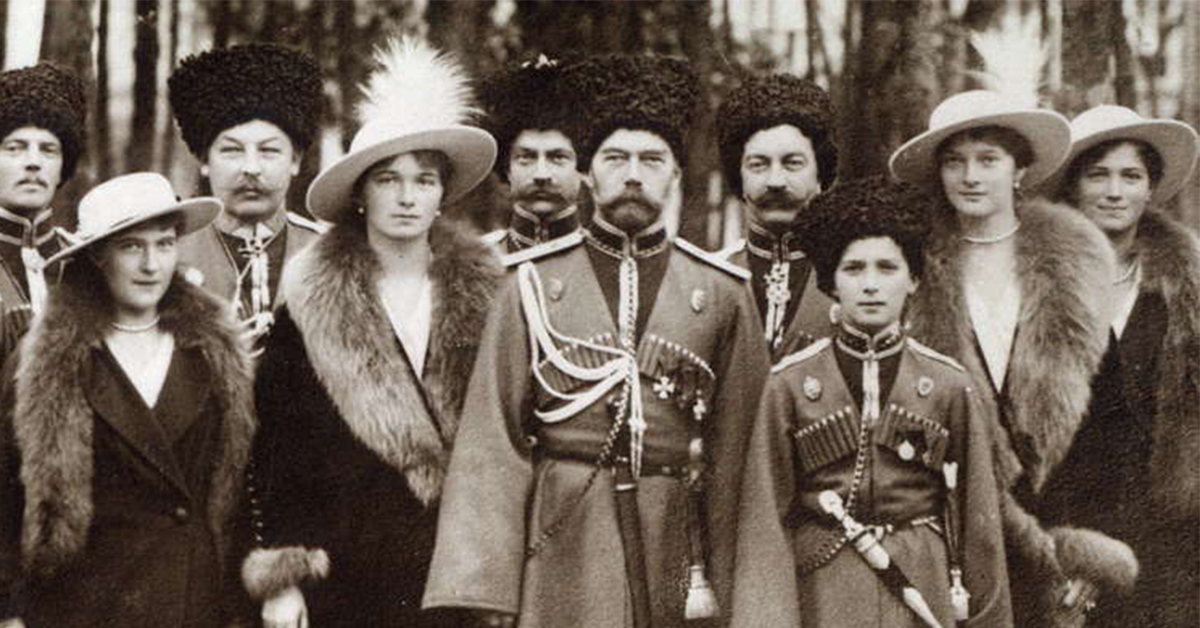
This photo shows Tsar Nicholas II visiting a regiment of Kuban Cossacks in Russia along with his children during World War 1. The Tsar's older daughters and wife helped nurse wounded soldiers as volunteers with the Red Cross during the war, though Anastasia was too young to help, so she played games of checkers and billiards with soldiers to lift their spirits instead.
During the war, Nicholas II took command of the army on the front lines. The war also provided an opportunity for his wife, Alexandra, to influence him toward an authoritarian government approach. Her German origin injured the Romanov’s reputation during this time.
Tsar Nicholas II with His Daughters

In the photograph from a collection of recovered Romanov family albums, Tsar Nicholas II is pictured with his daughters, Maria, Anastasia, Olga, and Tatiana. All four daughters were born before the heir apparent, Alexei. Olga was closest to Tatiana.
They were known as “The Big Pair." They were always seen together. Maria and her younger sister Anastasia were known as “The Little Pair.” Like Olga and Tatiana, they shared a room and dressed alike. The four girls were raised as simply as possible, sleeping on hard cots when they weren’t ill, and taking cold baths in the morning.
In Captivity At Tobolsk

This photograph offers a glimpse into the Romanovs' captivity at Tobolsk. The former tsar, Nicholas II, sits with Tatiana, Olga, a little boy of a servant, Alexei, and Anastasia on a fence in front of a greenhouse. In August of 1917, the Romanovs were sent to Tobolsk by Alexander Kerensky’s provisional government, supposedly to protect them from the revolution.
They lived in the former governor’s mansion in relative comfort until October 1917 when the Bolsheviks came to power. Then, the conditions of their imprisonment became stricter. The photograph above was taken in September 1917, just a month before life would become even more difficult for the Romanovs.
The Tsar & His Daughters On Their Yacht
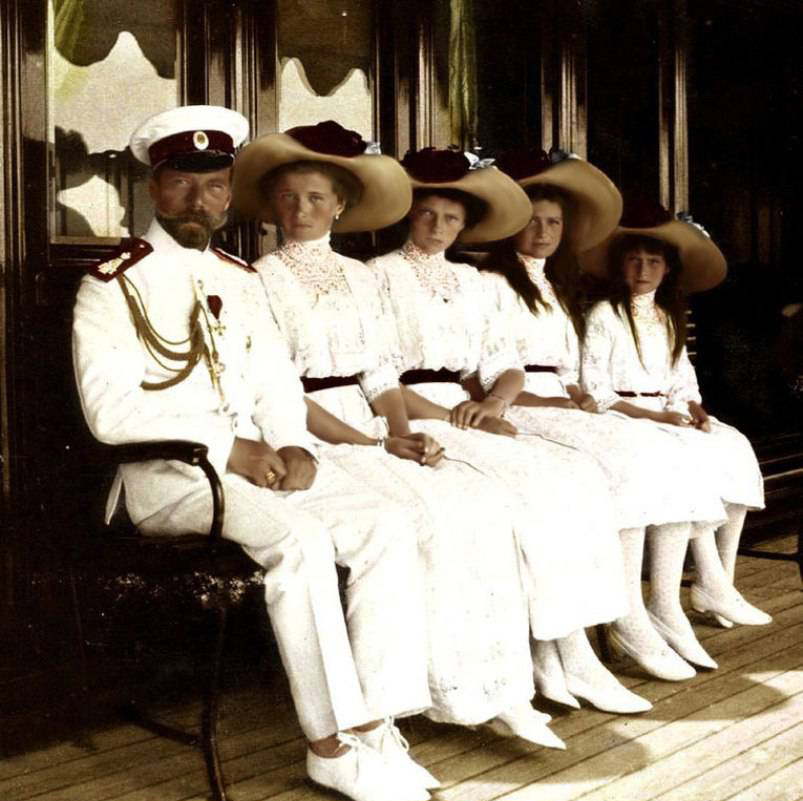
Prior to their fall from grace, the Emperor and his family enjoyed incredible wealth and luxury, including luxury forms of transportation. This photo show the Tsar sitting with his four daughters while vacationing on their imperial yacht, the Standart. The Standart was commissioned by Tsar Nicholas's father, Emperor Alexander III.
It was reportedly one of the most luxurious vessels of its time, fitted with crystal chandeliers and mahogany paneling, with the idea of making it a floating palace for the royal family. The yacht was also where the royal family were told in 1914 of the assassination of Archduke Ferdinand that would ultimately be the catalyst for the first World War.
Captivity At Tsarskoe Selo

The Romanovs' house arrest started at the Alexander Palace at Tsarskoe Selo. Nicholas II, no longer a monarch and addressed by sentries as Nicholas Romanov, was reunited with his family there while they were held by the Provisional Government and confined to their quarters.
The photograph above shows Olga, Alexei, Anastasia, and Tatiana sitting on the ground while being held captive. Anastasia is holding Tatiana’s beloved French bulldog, Ortipo, on her lap. The photograph was taken on May 1917, a couple of months after the Romanov children were reunited with their father and Alexandra was reunited with her husband on March 22, 1917.
Prince Alexei And His Father

This photograph from the Beinecke Library is also part of the Romanov family's personal collection. The photo captures a very young Prince Alexei sitting at the table with his father, Tsar Nicholas II. This candid moment reveals none of the political turmoil that was brewing beneath the surface.
Prince Alexei was the only male child of Tsar Nicholas II and his wife Tsarina Alexandra, who also had four daughters. As the heir apparent, Alexei was doted on by his parents and sisters and was affectionately referred to as Alyosha. Alexei’s health was always a concern; he inherited hemophilia from his mother, which made trivial injuries like a bruise potentially life-threatening.
Tsar Nicholas II After His Abdication
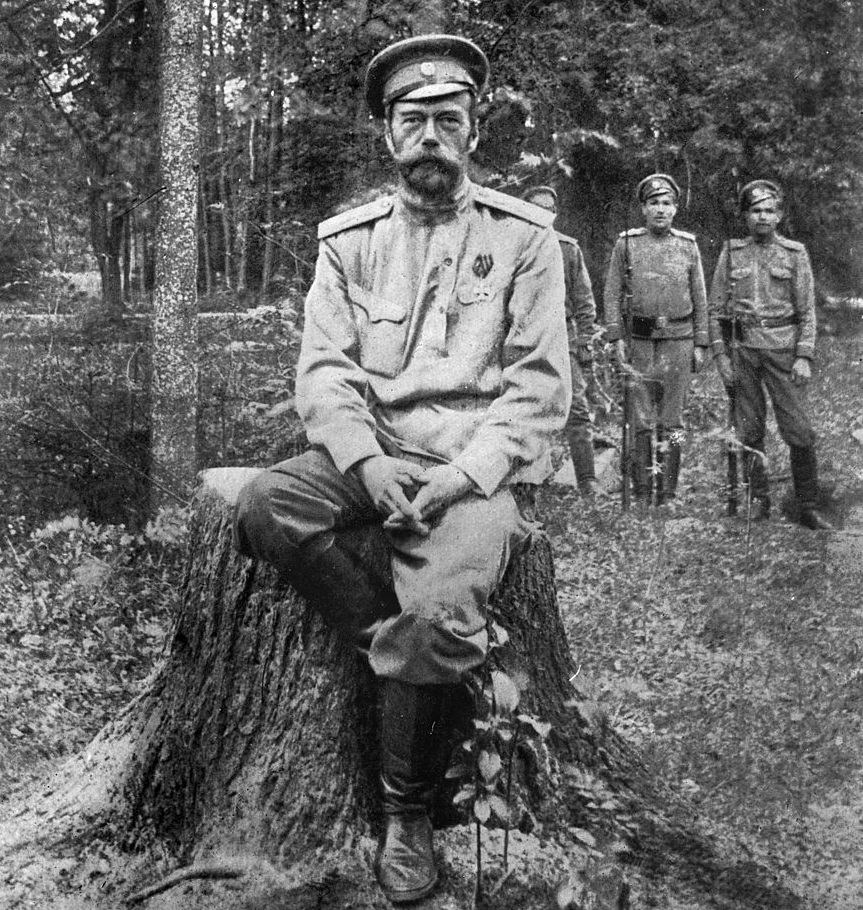
Tsar Nicholas II is shown here in a field surrounded by soldiers after his forced abdication on March 15, 1917. He was the last Emperor of Russia, and his reign saw the fall of the Russian Empire from a great power of the world to economic and military collapse.
Nicholas II earned the name Nicholas the Bloody for the events of the Khodynka Tragedy, Bloody Sunday, the violent suppression of the 1905 Revolution, his perceived responsibility for and defeat in the Japanese War, and the anti-Semitic pogroms common under his empire. The estimated 3.3 million Russians killed in World War I and the lack of food and supplies on the home front were ultimately the downfalls of the Romanov dynasty.
Anastasia Fooling Around
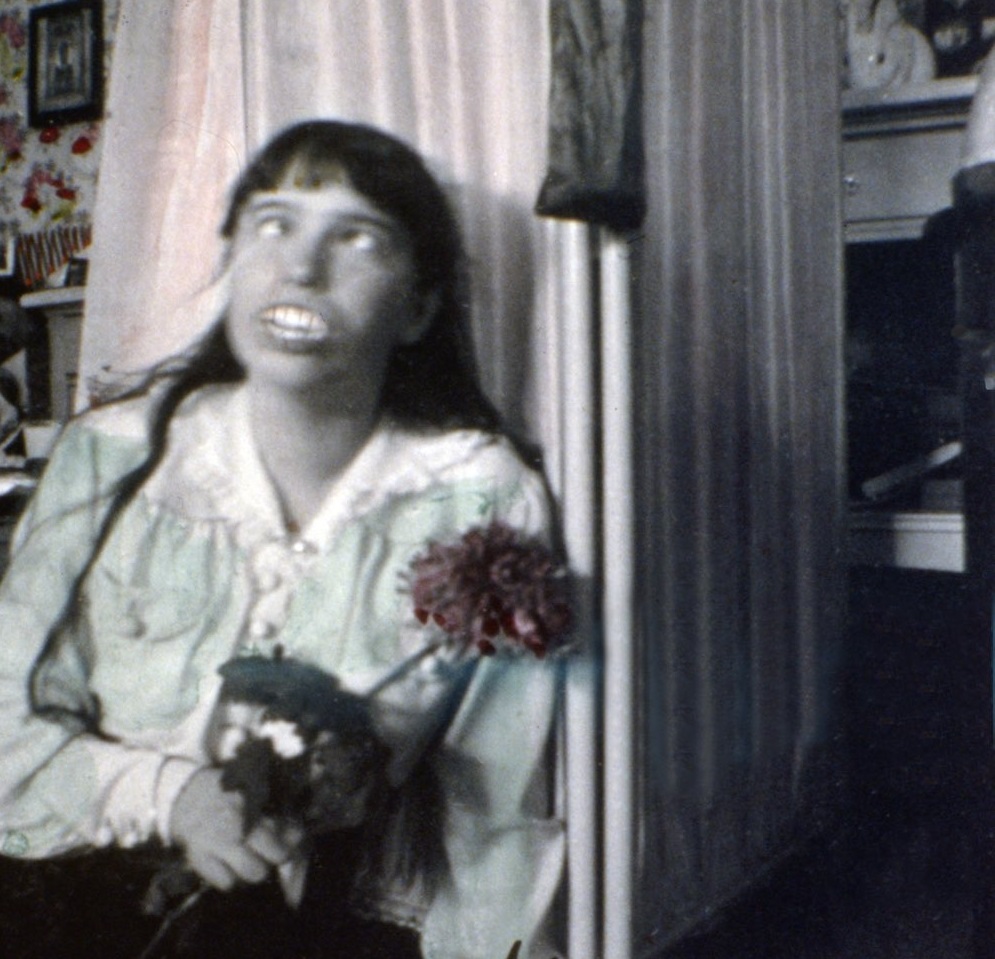
This photograph of Anastasia was taken in 1915 or 1916 before the Romanovs were taken captive. While it may initially look jarring, it simply depicts Anastasia fooling around with a pair of false teeth. Of course, back then false teeth were often made with teeth from the dead. So, with that knowledge, the photo is still a little creepy. Anastasia was known to be vivacious, mischievous, and energetic.
She often played pranks on her tutors. Despite her high energy, Anastasia was often in poor health. She bled more than normal when injured, and may have been a carrier of the hemophilia gene like her mother.
The Ipatyev House Basement
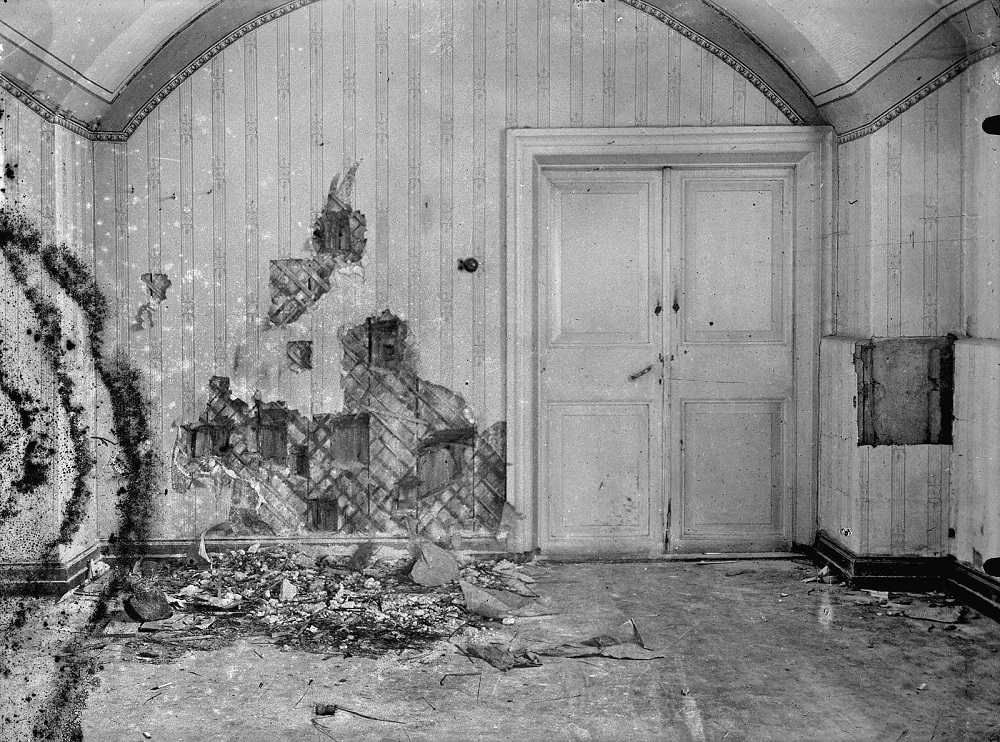
Before their execution, the Romanovs were moved to Yekaterinburg’s Ipatiev House. Around midnight on July 17, 1918, Yakov Yurovsky ordered the family to move to the basement under the pretense that it would be a safe location due to the impending chaos in Yekaterinburg.
The family was taken to the cellar room and asked to wait there. They were only given a few seconds to process their orders for execution before they were shot chaotically. At one point, the guards opened the doors to let out the smoke. The Romanov children had jewels sewn into their clothing, which protected them from the initial shots.
The Mythical Anastasia

This photograph shows another angle of Anastasia Romanov playing around with some kind of false teeth and making a funny expression. Anastasia went on to become the most talked about of all of the Russian royal family after their murders.
Partially because of rumors spread that Anastasia had survived the execution, which as previously mentioned turned out to be false. A popular animated children’s film was even made about what her life would have been life had she actually survived. Anastasia was not merely a fictional character or subject or lore but rather, as this photo indicates, she was just a normal young girl.
Sisters

In this photograph, some of the Romanov sisters are seen posing for the camera. Tsar Nicholas II, his wife Tsarina Alexandra and their five children Olga, Tatiana, Maria, Anastasia, and Alexei. Although, it is commonly known that Anastasia was the subject of myth for many years, so was her eldest sister Olga.
Although over the years many began to claim they were members of the Russian royal family, one woman named Marga Boodts also staked her claim to royalty and said she was actually the Grand Duchess Olga. Some relatives of the royal family actually believed her to be Olga and Nikolaus the Hereditary Grand Duke of Oldenburg who was a godson of Tsar Nicholas II allegedly financially supported Marga until his death in 1970.
Tatiana And Grigori Rasputin
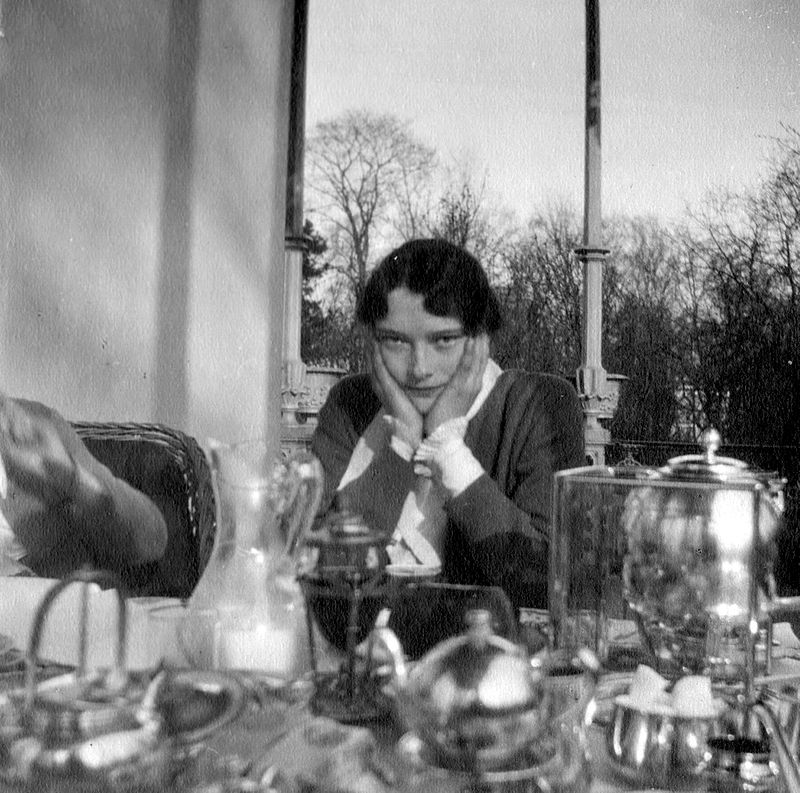
The Romanov family revered Rasputin and viewed him and everything he did as “holy”. However, the Tsar’s sister Grand Duchess Xenia Alexandrovna was horrified after she was told by one of the girls’ caretakers who said that Rasputin had visited the two eldest sisters while they were getting ready for bed and was “caressing” them.
Xenia apparently viewed Romanov as Khlyst which was an offshoot of the Russian Orthodox Church and she regarded him with much suspicion. Ultimately, the caretaker he who viewed Rasputin with suspicion was fired. There were rumors that Rasputin had seduced the four sisters. Ultimately, Rasputin was murdered not long before the royal family themselves were executed.
Maria

The third sister Romanov sister, Grand Duchess Maria, was said to have survived the initial attack on the royal family. Along with her sister Anastasia, after the initial shooting, they were being carried outside to a truck and they "sat up screaming". Some rumors surrounded the possible survival of Maria from the execution. Like her other sisters, people have claimed to be various family members and descendants of Maria’s.
However, historians mostly discount the possibility that any of the family survived the attack. In one such story, two young women claimed to be Maria and Anastasia and were taken in by a priest in the Ural Mountains. They were subsequently buried with the names Anastasia and Maria Nikolaevna; however, no proof surrounding the claims has been found.
A Royal Elephant

This photograph shows Prince Alexei with the royal elephant near the palace in Tsarskoye Selo. The photograph was taken in 1914, and in Tsar Nicholas' journal, he wrote: "Took the elephant to our pond with Alexei today and had fun watching him bathe." The elephant was apparently at the zoo on the family’s royal estate; however, after the 1917 Russian revolution, the zoo was closed.
It is unknown what exactly became of the elephant or the other animals for that matter. It is quite interesting to see the juxtaposition of such a happy photograph of a family that was able to have their own personal zoo with the fate that awaited them.
Sister Nurses

This photograph shows the Romanov sisters when they were working as nurses during the World War. More specifically, it shows the two eldest, Tatiana and Olga. Olga cared for and pitied the soldiers she helped to treat. The First World War, as most wars are, was quite brutal and horrific in nature.
There is no doubt that the sisters would have been witness to some horrific sights. Apparently, the stress did eventually get to Olga and she acted out in a number of ways. It is quite interesting that a royal family would not choose to protect their daughters from the atrocities of war but rather have them serve in the midst of it all.
One Of The Last Family Portraits Before The End

Here, Nicholas II of Russia and his wife Alexandra are photographed with their children including daughters Olga, Maria, Anastasia, and Tatiana, and son, Alexei. This portrait was shot by the Levitsky Studio and was one of the final portraits of the family altogether.
Taken in 1913, this photograph was snapped when the House of Romanov was still in reign. Less than two years later, on March 15, 1917, Tsar Nichols II would be abdicated as a result of the Revolution in favor of his brother Grand Duke Michael Alexandrovich. However, he declined to accept imperial authority and ultimately terminated the Romanov dynasty's rule over Russia.
A Self Portrait Of Tsar Nicholas II

This photo of Tsar Nicholas II was taken in 1915 by none other than Tsar Nicholas II himself. Nicholas II was an amateur photographer who loved to take photographs of his family and day-to-day activities.
He was meticulous when it came to his hobby and would take the utmost care of his pictures, filing them in various albums. Nichols II passed down his love for shooting film to his third-born daughter Maria. Maria was constantly photographing life through her eyes and took an interest in coloring many of the family photos.
"Baby" Alexei

Born on August 12, 1904, Alexei Nikolaevich was the long-awaited son of the Romanovs. He was the youngest child and only son of the Emperor and Empress and was the heir apparent to the throne of the Russian Empire. Alexei was born with hemophilia, which caused bruising and blood-clotting issues.
Because of his condition, Alexei had to be carefully monitored to prevent potentially life-threatening injuries. As a result, he was doted on by his entire family, many of whom called him "Baby." Alexei spent the last weeks of his life in a wheelchair due to an injury before he was executed at just 13 years old.
The Romanovs Visit Wounded Soldiers

Tsar Nicholas II is known for his poor handling of Bloody Sunday and Russia's role in World War I. When demonstrators appealed to Nicholas II to improve working conditions in St. Petersburg, troops opened fire on the demonstrators, killing more than 1,000.
His actions regarding these events ultimately led to his abdication and the execution of him and his entire family. Prior to his abdication, many of the Romanov family members would visit wounded soldiers in the hospital. This picture shows Tsar Nichols II daughters Maria and Anatasia during one of their visits.
The Romanovs Were Laid To Rest In 1998

This photo shows the final resting place of the Romanovs, in Peter and Paul Cathedral in St. Petersburg, Russia. Their funeral took place in 1998 and was meant to showcase the country's reconciliation with its brutal and corrupt past. The ceremony was attended by Russian President Boris Yeltsin, as well as 50 Romanov relatives.
Millions tuned in to watch the ceremony, which was televised, as soldiers carried the caskets of Nicholas, Alexandra, Olga, Tatiana, and Anastasia down a red carpet past various Romanov descendants and dignitaries. Following the ceremony, the remains were reburied in the family crypt.
A Bitter Anniversary

2017 marked the 100 year anniversary of Russia's Bolshevik Revolution, which marked the beginning of the end for the Romanov family. To commemorate the anniversary, members of the Communist party held protests throughout Moscow. Many carried photos of Vladimir Lenin. The Kremlin, not wishing to support a revolution of any kind by the people, remained silent.
Current president Vladimir Putin said that the revolution is best left to history books. In 2013, Putin said that “[t]oo often in our national history, instead of an opposition to the government, we faced opposition to Russia itself. And we know how that ends. It ends with the destruction of the state itself.”









